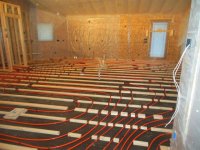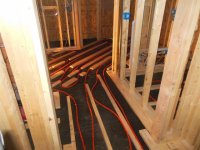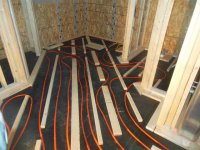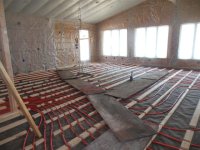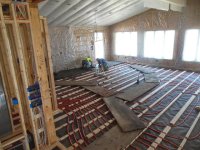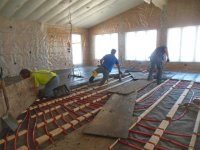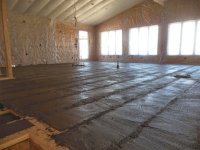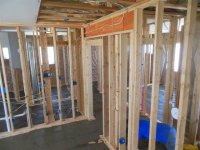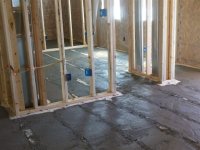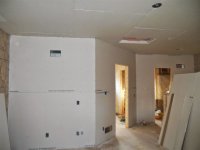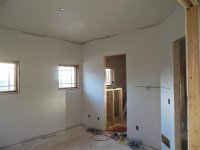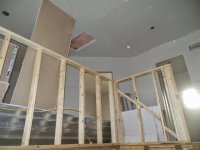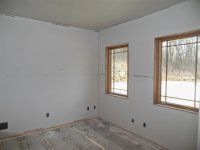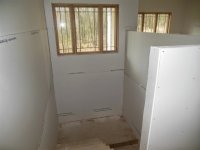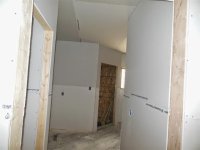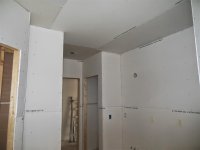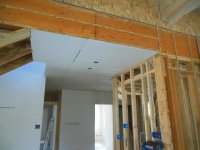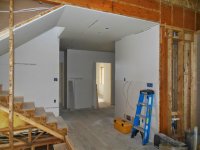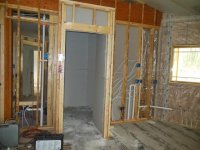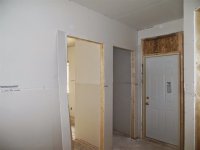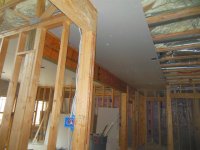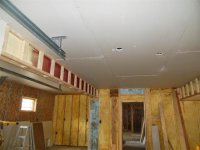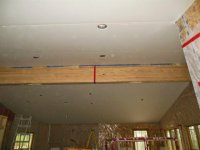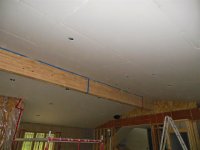Mother nature hates me
The weather up here had been overall pretty mild the 2-3 years before we started building. The moment I committed to starting this, all **** broke loose. Last year, we had about the wettest spring on record. I was fighting driveway and dirt washout problems constantly as the storms we were getting were dumping tons of rain in short periods, and they kept coming one after another. It finally stopped in July and July/Aug were bone dry (and brutally hot and humid, but at least our foundation excavation did not get washed out...). This slowed everything down and really killed progress. And then came Fall.... Well, we didn't have a fall - it went straight into winter. And then not just any winter, but the worst winter in some 130+ yrs (also as previously noted). And then the spring of 2014...Because 2013 wasn't wet enough - it happened AGAIN. Storm after storm, and this year it was worse. Now with all the extra site work that had been done, I was now having severe washout problems. I was seriously worried that the neighbors were going to take up pitchforks and torches as there was so much silt washing off the property with these almost unprecedented rains. We are starting at about mid May 2014 for this.
I knew I had to get the landscape under control fast.
I had been poking at the excavator for a while but he had kept putting me off. After the last big storm I called him and said "it is now critical - you have to get out there". He has too much going on, but finally he broke out some time and did it. It wasn't perfect, but over the space of 2 weeks he got the landscape about 90% settled. I was also able to use the tractor for a bunch of prep work when he wasn't there to help keep things moving along. I took a few days off work to get this all moving. What I found, not surprisingly, is that if I was not there, not much got done. That was the other main reason I took the time off. The excavator subbed out some of the wall work. He does not like to build walls, and even though I could do it, it was one more thing I really didn't have time for -- especially since I was trying to get this all under control quickly to avoid angering the neighbors and the town with the washout problems. So here are some photos of that process. This gets us pretty much up to date with current progress.
First off, the main drainage culvert. Discussion with the excavator and looking at how water flowed showed a really good place below the turnaround that could be used as a catch basin/collector to get water collected and shot out down a culvert into the woods down below so it wouldn't wash everything out like it had been. So he created a ditch leading down to a catch basin, and dug a trench under the driveway down into the woods to run a big 8" culvert to catch the heaviest rains and shunt them down hill without blowing everything out.
Right in the middle of this photo, you can barely see the round outline of the catch basin, to the right of the road.

Here is the culvert path going down into the woods. If you look closely, you can see the black pipe headed straight down hill, right dead center in the photo, where the dirt ends. The main goal here is to get the water downhill without taking all the dirt down with it. This should do it!

Next up, the walls. We did 3 more walls. 2 of them were pretty small, and one more was a bit larger.
The garage wall. This was mostly to clean things up at the house garage where the turnaround drops off. Not real large, but helped the landscape flow a lot better.
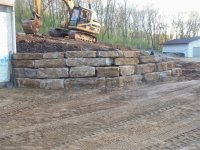
Another little one as an alcove for the service door on the shop. Just trying to keep the hill up on the hill here... [Added note - this was later changed as I needed more wall to keep the water moving away from the driveway. Pics of that later]

The bigger one - the garden wall. This thing was not supposed to be this big, but the dirt dictated it be pretty substantial. It is 8-9' high at the house, and tapers down from there. We had to do what made the most sense, so the guys kept building it and backfilling to see how it all laid out. They stopped when it made sense. This is the wall in the foreground. The wall in the background was the massive one I did back before we started building.
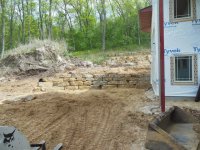
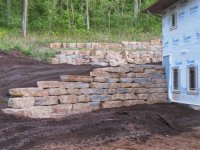
So while all this was going on, I started seeding to get the ground stabilized. This involved a few things: Grass seed, oats (they germinate and sprout a lot faster I am told, and as an annual won't keep coming back much), straw bales, and straw blankets. The blankets are important for erosion control. They are rolls of straw and a plastic netting that you roll out and staple down to help hold everything in place. Plus the straw helps keep the soil moist longer, to help the grass and oats grow.
Here is the first day's work (this is just me doing all this, solo):
East side of driveway, and septic drain field mound:

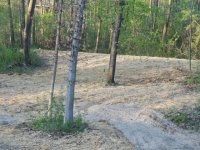
West side of driveway. My goal was to get everything that could be seen from the street settled first so there would be no question I was trying to get it under control. You can see my trailer in the cul de sac with a bunch of straw bales still on it.

Day 2, the excavator was working on the turnaround up by the front door. He leveled out the pad and placed the crushed limestone for the driving surfaces, and then started placing black dirt on the hillsides. Here he is mostly done with that, and just needed to finish spreading and leveling the black dirt out.
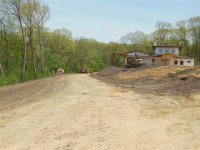
While he was doing that I worked on more of the driveway down slope areas for seeding. I finished off a large chunk of this that day. Lots of erosion control blankets on the left side, where the water tends to run faster and washout dirt and driveway.
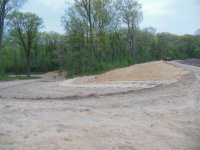
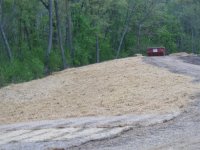

Then I ran out of oats and it was memorial day. I knew the feed store was not open, but the local Fleet Farm store was and they had oats. Since I knew rain was coming, I wanted to get another critical section done. So I grabbed a couple bags and hit it. I got that turnaround slope all settled in, which is another big washout area, so this helps a lot.
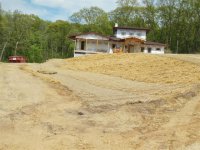
Here is a look at the turnaround, not quite complete. The bucket is sitting in the middle of the turnaround, where there will be some sort of garden and trees later. The excavator placed some black dirt there the next day.
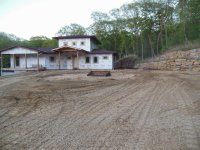
And that's about it for now. I have been spending most of my time in the shop trying to get it more ready for work on finishing cabinets and doing doors. Still a lot to go there, but I am making progress...
Update from last night (5/31/14): We had yet another massive washout rain. Something like 3-4" in the early morning hours. And once again the driveway blew out. The only good part is that most of the landscape work I did held up. A couple small washouts, but nothing killer. Next task is to figure out a way to move the water off the driveway before it causes problems. But then they said more thunderstorms tonight. Oh goody...
